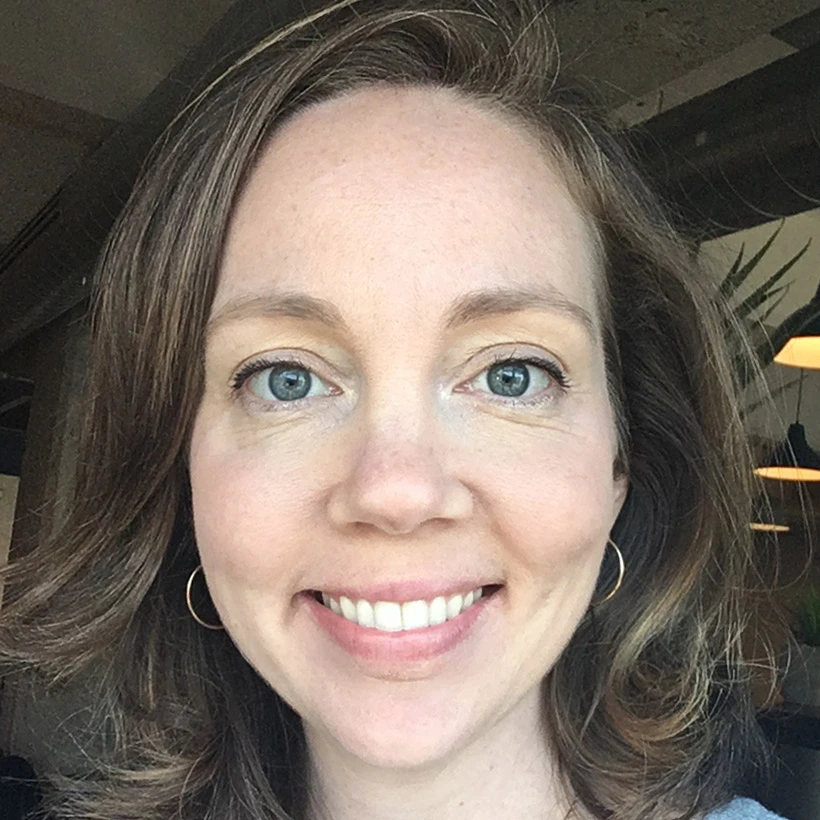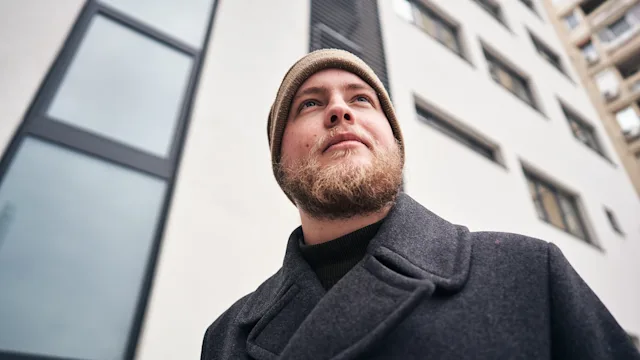Key takeaways:
Seasonal affective disorder (SAD) is a type of depression that reoccurs at certain times of year, like in the winter. It can be treated with mental health therapy, medication, and bright light therapy.
Using a light box for seasonal depression involves sitting in front of a special lamp every day, usually in the morning.
Light therapy for SAD is a proven treatment. It may work by supporting your body’s natural sleep-wake cycle and regulating certain brain chemicals.
If you find yourself feeling down when the seasons change, it’s possible you could have a type of depression called seasonal affective disorder (SAD). The good news is that SAD is treatable with medications, mental health therapy, and bright light therapy. And, for many people with SAD, light box therapy can be a safe, effective, and low-cost way to improve mood and boost energy from the comfort of home.
What is SAD light therapy?
Light therapy involves the use of a special light box, sometimes called a SAD therapy lamp, which imitates sunlight. The goal is to provide exposure to bright light, which may help to improve mood and boost energy for some people.
In addition to medication, mental health therapy, and lifestyle changes, light therapy may be a great option for people with SAD. Treating SAD with light therapy isn’t a complicated process. It just requires you to sit or stand by the light box. You can do this while listening to music, reading, or just relaxing.
Because light therapy doesn’t require physical effort, it can be a great addition to other treatments, like medication or mental health therapy. For example, morning light therapy sessions can be combined with weekly appointments with a mental health therapist. And it may even help other treatments, like antidepressants, work better.
What does light therapy treat?
Light therapy is best known as a treatment for seasonal affective disorder. SAD is a type of major depression or bipolar disorder in which symptoms happen at a certain time of year.
Common symptoms of SAD include:
Feeling sad, irritable, or hopeless
Taking less pleasure in activities
Feeling guilty or worthless
Having less energy
Sleep changes
Having poor concentration
Appetite changes
There’s also some evidence that light therapy can treat other types of depression, too — not just SAD. These include:
Depression at other times of the year
Depression in children and teens
Depression in adults with Alzheimer’s disease
Light therapy can also help with sleep-wake disorders, like delayed sleep phase syndrome.
Learning to live with seasonal affective disorder (SAD): Podcaster Andy Neal talks about his journey with learning to embrace winter, and the SAD that often comes with it.
Looking for more strategies to combat SAD? Check out these ideas that can help you beat the winter blues.
When it comes to SAD, how does your state measure up? Some states seem to have higher rates of SAD than others. See how Northern and Southern states compare.
Does light therapy work?
Light therapy is effective for many people with SAD. Studies suggest that around 3 out of 5 people using light therapy will see their symptoms cut in half a few days to a few weeks after starting treatment.
You can use light therapy any time of year. But it may be most valuable if:
It’s fall or winter.
You live in a cloudy or rainy climate.
The days are shorter.
You aren’t exposed to much natural light.
Read more like this
Explore these related articles, suggested for readers like you.
Evidence shows that depression symptoms tend to return a few days after light box treatment ends. This means you may need to keep using your therapy light for the whole season for best results. Once the season changes, you may be able to end or cut back on treatment.
Why does SAD light therapy work?
Experts aren’t exactly sure how light therapy works. It may have to do with the ability of light therapy to balance out seasonal changes on the body.
Some people believe that SAD happens because the body’s natural circadian rhythm (body clock) no longer matches clock times. This could be due to factors like daylight saving time and shorter days in the fall and winter. It’s thought that light therapy can help reset the body’s rhythms to better match the seasons. And, when your body rhythms better match the environment, you may have fewer depressive symptoms.
Other people believe that SAD is caused by seasonal changes in the levels of an important brain chemical called serotonin. Serotonin helps regulate your mood and sleep and may play a role in depression. Light therapy may help increase the available serotonin in the brain and, in turn, lower the risk of depressive symptoms.
How should I use SAD light therapy?
The recommendations for light therapy vary based on your symptoms. You could see a benefit from 30 minutes of light each morning. Others may need several hours of light therapy to get the desired result.
Here are some tips for using your light box for the winter blues:
Set up the light box at eye level, about 2 feet from your face.
Direct the light toward your face. It’s OK if the light shines at an angle.
Keep your eyes open, but don’t stare directly into the light.
For best results, use your light box every morning. Some people also find it helpful to use it at night, but that can make it harder to fall asleep. Before using a therapy light, be sure to talk to a healthcare professional about what pattern makes the most sense for you.
Are there side effects of using light therapy?
Like many other treatments for SAD, there are some side effects of light therapy. Luckily, these side effects are not common. When they do appear, most are mild and short term.
Possible side effects of light therapy include:
Strain on the eyes
Dry eyes
Poor sleep
Nausea
Diarrhea
Choose a light box that filters out ultraviolet (UV) light, since these rays can be harmful to your skin and eyes. As long as the light box is being used as designed, you’ll avoid skin and eye damage.
Note: In people with bipolar disorder, light therapy could become too activating and trigger a manic episode or hypomanic episode. If you have a history of mania, talk to a healthcare professional before using therapy light.
When should I talk to a healthcare professional about SAD light therapy?
If you’re interested in SAD light therapy, talk to a healthcare professional. Though you don’t need a prescription to purchase a therapy light, you should still check with a healthcare professional before using one. They can determine if light therapy is safe and helpful for you to try.
For many people, bright light therapy is safe and effective. But light therapy may not be best if:
You take medications that increase your sensitivity to light.
You have an eye condition, like macular degeneration.
You have diabetes, which can lead to eye problems.
Your care team can help you weigh the benefits and risks of light therapy. They may even be able to give you recommendations on how to make the treatments more effective and help you choose a light box that’s safest for your medical conditions.
How do I choose a SAD lamp?
Always consult with your treatment team when picking a light box, or SAD lamp. Bright light therapy lamps aren’t regulated by the FDA, so there’s no set standard for the devices.
The lamp you choose should be specifically designed for light therapy. Be cautious of cheap or poorly built light boxes. Those may not offer the power or type of light that makes a difference for SAD symptoms. Using the wrong bulbs, lamps, or light sources may lead to unwanted side effects or a lack of results.
10,000 lux brightness for standard 30-minute sessions
2,500 lux brightness for alternative 1- to 2-hour treatments
Full-spectrum light
A filter to block out harmful UV rays
Frequently asked questions
No, red light therapy isn’t a SAD treatment. Red light therapy is low-level, near-infrared light. It’s a different wavelength than bright-light therapy, so it isn’t used for treating SAD. Red light therapy is thought to help with hair growth, skin health, muscle pain, and inflammation.
It depends. If you know that you experience SAD, it may be better to start light therapy before your symptoms typically appear. But some people find it’s helpful to wait until symptoms of SAD begin to emerge. Talk to a healthcare professional for guidance, as they can best advise you on your unique symptoms.
It’s best to purchase a lamp that’s specifically made for light therapy, and approved by experts. Though there are many online tutorials for making your own light therapy box, it’s not a good idea to make one yourself. Therapy lights must be very bright, while also filtering out harmful UV rays. And most homemade lights don’t do this safely.
No, red light therapy isn’t a SAD treatment. Red light therapy is low-level, near-infrared light. It’s a different wavelength than bright-light therapy, so it isn’t used for treating SAD. Red light therapy is thought to help with hair growth, skin health, muscle pain, and inflammation.
It depends. If you know that you experience SAD, it may be better to start light therapy before your symptoms typically appear. But some people find it’s helpful to wait until symptoms of SAD begin to emerge. Talk to a healthcare professional for guidance, as they can best advise you on your unique symptoms.
It’s best to purchase a lamp that’s specifically made for light therapy, and approved by experts. Though there are many online tutorials for making your own light therapy box, it’s not a good idea to make one yourself. Therapy lights must be very bright, while also filtering out harmful UV rays. And most homemade lights don’t do this safely.
The bottom line
Light therapy can be a safe, effective complement to other treatments for seasonal affective disorder (SAD). By sitting in front of a bright light for a short time, you may be able to improve your mood, energy, and motivation — and reduce those winter blues. If you’re interested in testing the benefits of a light box, talk to your treatment team to find out what might work best for you.

Why trust our experts?



References
American Psychiatric Association. (2025). Bright light therapy: Growing evidence beyond seasonal depression.
Campbell, P. D., et al. (2017). Bright light therapy: Seasonal affective disorder and beyond. Einstein Journal of Biology and Medicine.
Hao, X., et al. (2023). Subthreshold depression: A systematic review and network meta-analysis of non-pharmacological interventions. Neuropsychiatric Disease and Treatment.
Maruani, J., et al. (2019). Bright light as a personalized prevision treatment of mood disorders. Frontiers in Psychiatry.
National Health Services. (2022). Treatment - Seasonal affective disorder (SAD).
Ninan, P. T., et al. (2016). Bright light therapy as augmentation of pharmacotherapy for treatment of depression: A systematic review and meta-analysis. The Primary Care Companion for CNS Disorders.
Redd, N., et al. (2025). The best light therapy lamp. The New York Times Wirecutter.
UCLA Health. (2025). 5 health benefits of red light therapy.














